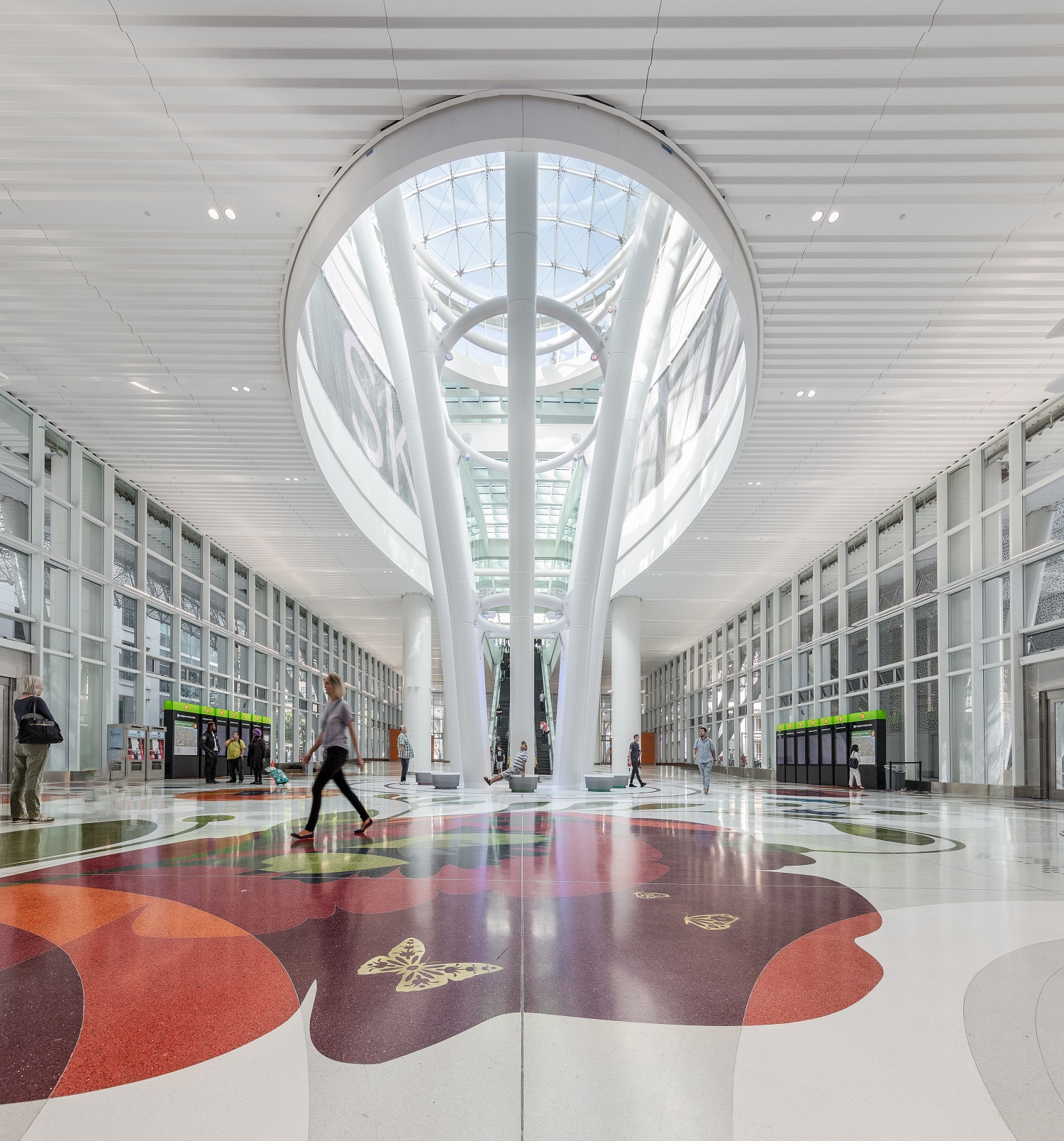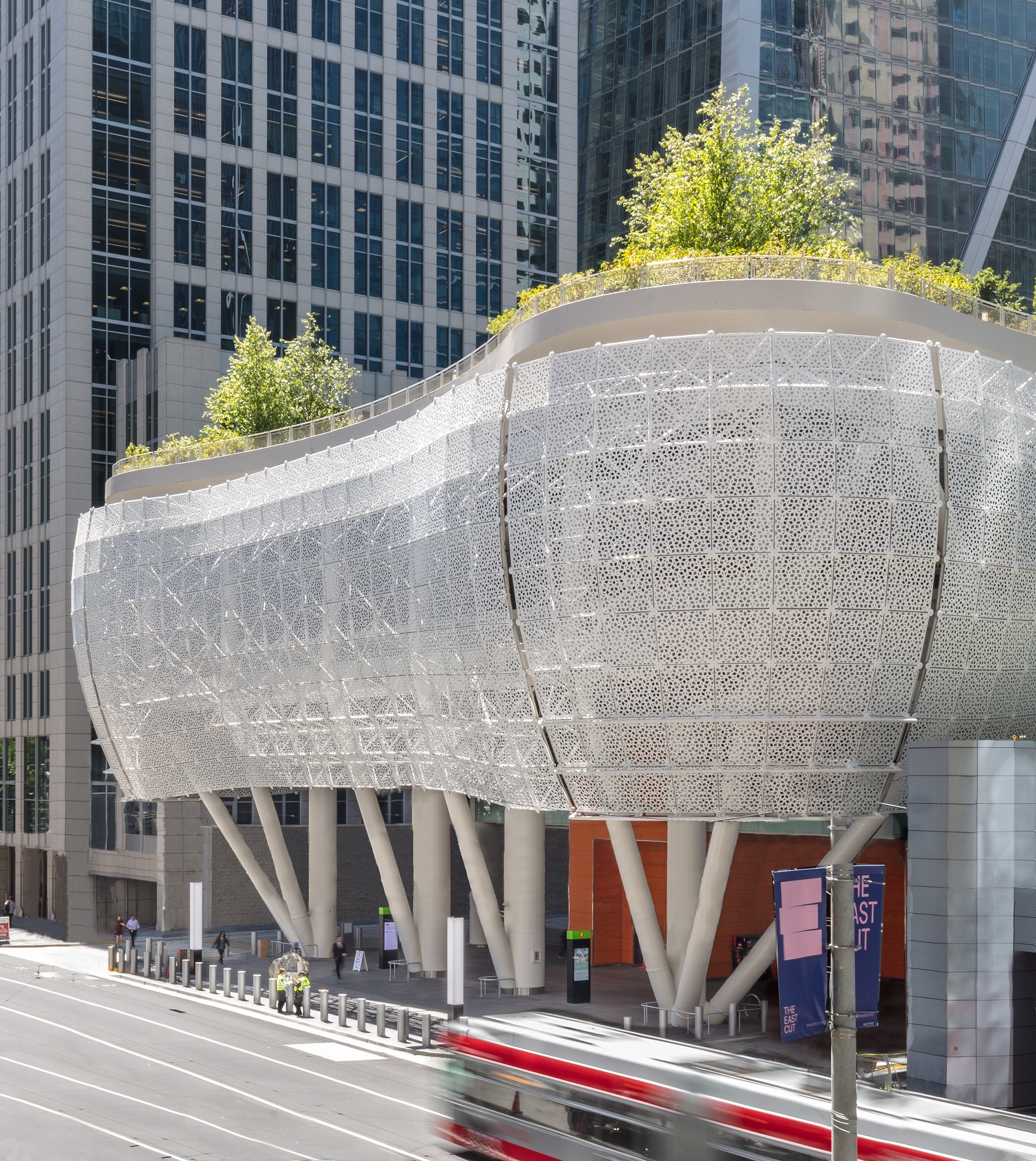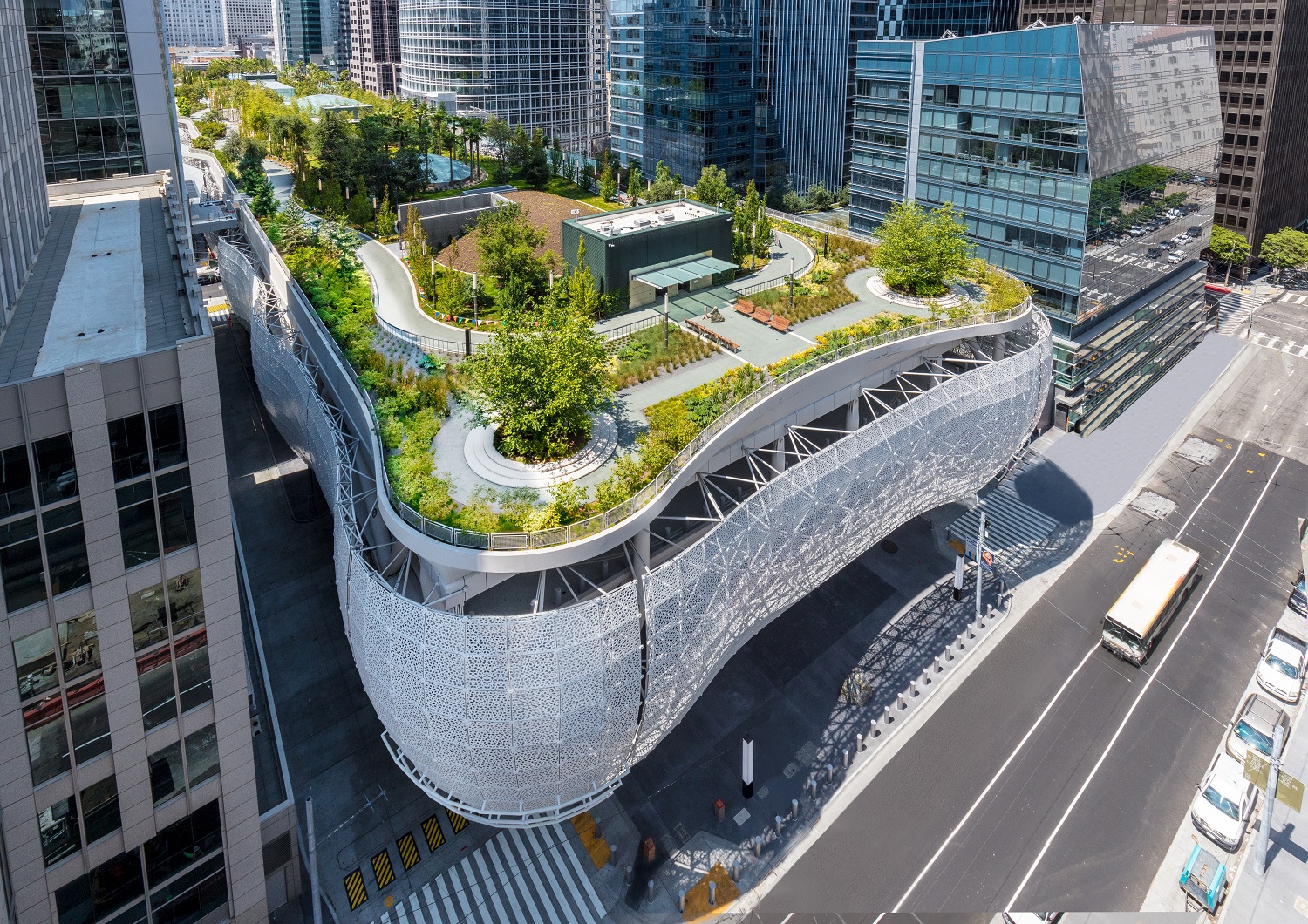Already an established landmark in the San Francisco Bay Area, Salesforce Transit Center has re-imagined a transportation hub as part of an inclusive, urban experience. Called the “Grand Central Station of the West,” the multimodal facility spans four blocks, encompasses 1.2 million square feet and can accommodate up to 45 million riders annually.
Designed by Pelli Clarke Pelli Architects to achieve LEED Gold certification, the building’s exterior is enveloped in a gracefully curving cloud of laser-cut metal that elegantly balances natural light and shade. The façade’s lace-like veil features a mathematically derived, continuous nonrepeating Penrose Pattern. Enhancing their delicately patterned, dynamic appearance, Architectural Systems, Inc. (ASI) finished the metal using a pearlescent White Shimmer in Fluropon® Effects Nova by Sherwin-Williams Coil Coatings.
Whether selecting neutral, bright or pastel palettes in subtle tones or bold hues, Fluropon Effects Nova coatings deliver vivid sparkle coupled with the color integrity and high performance of other 70 percent PVDF resin-based architectural coatings by Sherwin-Williams. Visible, small, silver metallic flakes in the finish reflect light and impart Nova’s intense sparkle that gleams under the California sun.
The distinctive Penrose Pattern, discovered by mathematical physicist and Oxford University professor Roger Penrose, generates a rhombus-shaped tiled design. The exterior wall cladding is perforated with an artistry rendered, scientifically inspired pattern results in 37 percent of the awning system’s surface remaining open. The small, plentiful openings allow diffused light to fill the interior.

The patterned, perforated, curved awning system’s 140,000 square feet of aluminum panels were fabricated by McClean Iron Works. Approximately 44 feet tall and wrapping the entire four-block Transit Facility, Crown Corr installed both the awning panel system along with 93,700 square feet of aluminum unitized curtainwall. Other manufacturers and materials suppliers involved in creating the innovative façade system included 3A Composites USA, Bonnell Aluminum, Keymark Corporation and Oldcastle Building Envelope.
Achieving the intended aesthetic and reliable performance for the Transit Center’s numerous architectural aluminum products, several 70 percent PVDF Fluropon finishes and colors also were specified. Along with Fluropon Effects Nova in White Shimmer, Fluropon Special in Bone White and Fluropon Classic II in Silversmith and Pewter colors all contributed to the Transit Center’s appeal. The Silversmith and Pewter colors further accentuate the natural beauty of metal in the Fluropon Classic II’s two-coat, light-reflective mica/metallic finishes.
Beyond their eye-catching appearance, Fluropon 70 percent PVDF coatings provide outstanding color and gloss retention, withstand extreme weathering, and resist dirt, stains, chalking and fading. With consideration to the Transit Center’s high-traffic, coastal setting, these coatings also are tested to meet or exceed the industry’s most stringent performance specification, AAMA 2605 for exceptional resistance to UV, humidity and salt spray.
Owned and operated by the Transbay Joint Powers Authority, the Transit Center offers four upper stories, two lower levels and more than 100,000 square feet of shopping and dining spaces, an amphitheater, a children’s play area, a gondola, walking trails and a 5.4-acre rooftop public park.
“When we first addressed the design of the Salesforce Transit Center, we saw that the building had to be both a gateway to San Francisco and a good supportive neighbor to the buildings adjacent to it. We were committed to the idea that this large-scale structure could be both humane and civilized,” said Pelli Clarke Pelli Architects’ co-founder and senior design principal, Fred Clarke, FAIA.
He continued, “From its spacious light-filled Grand Hall to the five-acre Salesforce Park, the building embraces and extends the public realm, welcoming everyone to this new urban center. Its exterior wall and art program symbolizes the innovation and creativity of the Bay Area.”

The architects thoughtfully considered and incorporated sustainable design features throughout the center, such as natural lighting and ventilation, geothermal regulation, and greywater recycling. Further supporting LEED Gold certification through the U.S. Green Building Council, the Transit Center will also reduce greenhouse gas emissions significantly. The annual energy consumption is projected to be 50 percent lower than the 2008 Title 24 Energy Efficiency Standards. Its associated carbon emissions will be reduced by approximately 40 percent.
Bringing these architectural concepts to reality, Webcor Obayashi Joint Ventures served as the project’s construction manager and general contractor. Construction of the new Salesforce Transit Center was necessitated by the 1989 Loma Prieta earthquake, which damaged the original Transbay Terminal that opened in 1939. The new project broke ground in 2010.
The Salesforce Transit Center opened in August 2018. It serves a regional hub connecting eight Bay Area counties and the State of California through 11 transit systems: AC Transit, BART, Caltrain, Golden Gate Transit, Greyhound, Muni, SamTrans, WestCAT Lynx, Amtrak, Paratransit and future high-speed rail from San Francisco to Los Angeles/Anaheim.
According to Transbay, the Downtown Rail Extension will help remove thousands of commuters from the road, resulting in $360 million in travel time savings, more than $120 million in avoided vehicle operation and maintenance costs, and more than $20 million in benefits from improved safety. Construction of the Transit Center and buildout of the surrounding neighborhood are estimated to generate more than $87 billion in gross regional product and $52 billion in personal income through 2030.






